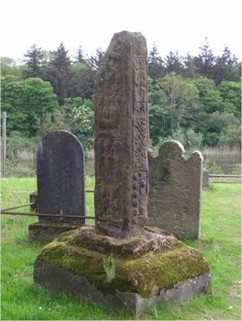Camus
St Mary’s a ‘WELL’ Church growing through prayer and service
Camus can be found on the A54 Curragh Road, 3 miles south of Coleraine and 6 miles north of Kilrea.
The foundations of the Celtic church or monastery may still be traced in Camus old graveyard. The monastic foundation of Camus owes its origin to St. Comgall of Banfor. It was founded in A.D 580, probably under the patronage of Pictish residents in Dun-da-bheann or Mountsandel and Dun-Cetithern (the Sconce), whose occupation of this territory is still attested by the Townland of Drumcroon, or “Pict’s Ridge”.

In 938 A.D. Muircertach Camsa, that is “of Camus,” was Abbot of Bangor (Annals of the Four Masters). An island in the River Bann opposite the Churchyard of Camus was formerly called “Inis Lochain,” now “Loughan Island,” which is included in Fish Loughan, in the Parish of Kildollagh, and had a fort at each end. Close to this island was a ford called “the ford of Camus,” which the island is called Enis Forsed on Speed’s Map of Ulster.
Bishop Montgomery’s survey of 1609 says “Camus Church of St. Connellus, Rector John McReady. One good quarter, there near the Bann is a good villata of Mensal land called Ballynesse. There are some good woods in the quarter, near Ballynesse, a Salmon Fishery which starts in May and ends in August. They say that the Bishop has a free leap. The tithes of the Salmon are divided between the Bishops of Derry and Down, because the place where they are caught is the border of bishpories. The tithes of the Bishop of Derry are demised this year for £33. The Bishop has a free day of fishing with his nets, and if he does not bring nets, half of the episcopal third of the fish belong to the Bishop and half to the fishermen.”
Throughout the early 1600’s the Plantation of Ulster was taking place. The London Companies, Merchant Taylors had settled in Macosquin and “offered to built a faire Church upon the ruins of ye Abbey” Having performed their offer the parishes of Camus and Macosquin were united thus bringing an end to worship at Camus.
In 1622 one discontented man called Oliver Nugent, described as an obstinate recusant (i.e. one who did not attend the parish services) had set about repairing the church at Camus. It was felt that this was a purposeless exercise as the church in Macosquin was better situated in the centre of the parish.
There is still one remnant of Celtic Christianity in Camus graveyard. It is an ancient sculptured cross or pillar, divided by transverse bands to four compartments, each containing three human figures in relief. This cross stood on a base at the west side of the churchyard till 1760, when it was overturned, and having been mutilated, was converted into a gate post for the churchyard. In 1905 it was replaced on its stone base and set up at the east end of the graveyard, near to the present entrance. The cross is supposed to have been erected to the memory of St. Comgall. It is of yellow sandstone; the shaft is 6ft, 6ins. High, 1ft 8ins. Broad and 12ins. Thick. There is also a rude font in the graveyard. It is a flat basaltic stone, with a circular hollow. Many pilgrims resorted to it until the beginning of the nineteenth century, – Mrs. A. M’L. May in Preliminary Survey of the Ancient Monuments of Northern Ireland, p. 190.
On Easter Day at daybreak a service of Holy Communion is celebrated at the ancient site.
